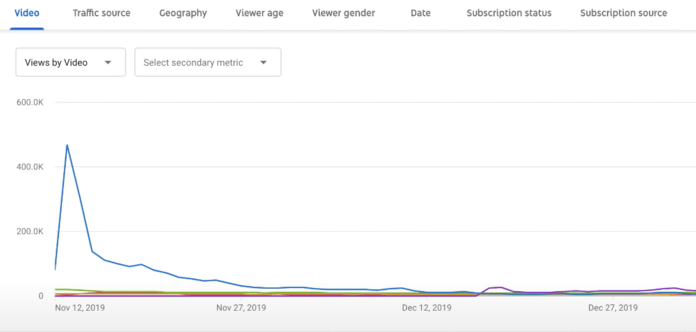Picture this — you want to learn more about a particular topic, but when you land on the article, it says “15-minute read”. You don’t have 15 minutes to read the article, but you do have a few minutes to watch the quick video located at the top.
You click to watch the video and are impressed with the level of information it provides to you in its short run. Based on the quality of the video, you decide to look around the site to see what other gems they have. You stumble upon their video library and fall in love with the amount of videos they share and the variety of content. You even subscribe to their newsletter to see what videos they will come out with in the future.
That’s just a glimpse into the importance of video content marketing in your overall search engine optimization (SEO) strategy. We’re covering four key benefits of video on SEO you will experience from leveraging video content into your digital marketing. Keep reading!
4 incredible benefits of videos on SEO
Here’s how video benefits SEO in four ways:
- Video content is more digestible
- Video content is trackable
- Videos are shareable
- Search engines love videos
1. Video content is more digestible
As the example above showed, video can be more digestible for some individuals. Whether an individual is in a time crunch or just prefers watching videos, video content can help you reach new audiences. Implementing effective video marketing SEO strategies can further expand this reach by ensuring your visual content ranks well in search results.
Not all consumers are built the same, though. Each consumer has a learning style that matches them best. It is important to tailor your content to an array of learning styles so you can best match a variety of audiences. Some of the most popular learning styles include:
- Reading/Writing
- Visual
- Auditory
For reading-based learners, a longer piece of content would serve quite well. Video is the best option for those who learn better visually and via auditory routes.
Consider someone looking to learn a specific exercise. A healthcare brand could create videos to show how to complete the exercise without causing accidental injury.
Even if we consider learning style, sometimes a long piece of content filled with tons of words can still be daunting to some site visitors. They may just skim your article and wish for a simpler and more engaging way to digest the content. This is where video comes into play.
Video content is often more engaging and can hold the site visitor’s attention. Prospects may also feel like the video speaks directly to them. If you have a speaker within the video, your customer may connect with them better.
2. Video content is trackable
When you add videos to your website, you open the door to new data! With videos on your site, you can track metrics like video watch time and clicks to play. Let’s break down some video content metrics:
- Video progress (watch time): This metric details how long the average person watched your video. This can even be broken down to show the points at which people started “dropping off” from watching your video. This metric allows us to see where people may become less engaged with your video and where you can make edits.
- Click to play: If your video doesn’t automatically play, you can track what is called “clicks to play.” This is when an individual clicks on the video to play it. If this metric is low, you may consider moving the video up on the page to increase this number.
- Completion rate: Tracking this metric will let you know how many people completed your video. This can let you know how well your video kept your user’s attention.

There are more metrics you can gather from incorporating video into your content strategy. These metrics can be gauged to see your videos’ success and if editing is needed.
3. Videos are shareable
Videos tend to be more shareable than some other forms of content. Their short nature and visual appeal lend nicely to sharing on social media. This easy shareability opens videos up to a lot of cross-channel posting.
If your business posts a video on your website, you can also post it to your YouTube channel and social media profiles. Your video content is flexible for SEO, pay-per-click (PPC), email marketing, and social media purposes.
Consumers and followers can also share your video easily. When posting videos on your website for SEO purposes, consider adding some sharing buttons to encourage others to share your video.

Social media followers would need to click on your blog’s link to read your content, but with video, they can watch your content straight from their feed. This ease of access also creates a greater likelihood of engagement on social platforms.
YouTube is a platform that acts as both a social media community and a search engine all in one. Posting video content to YouTube can help with SEO and engagement too. You can use YouTube embeds to easily post videos to your website. Plus, your YouTube videos can drive comments, shares, likes, and subscriptions to your YouTube channel. This type of engagement can help to boost your brand awareness and website traffic.
4. Search engines love videos
Search engines love content variety. From Google’s image search to YouTube’s video results, search engines are more than equipped to populate non-text results.
As we head into the future, we even see search engines prioritizing different types of content. Take, for instance, Google’s Search Generative Experience. This artificial intelligence (AI) search experience can now share visual content in its results. This includes both graphics and videos.
Video is so special to Google, in fact, that a whole schema markup exists to let Google bots better understand a video on your site. Schema markup is a bit of text that is added to the code of your site to help Google better grasp certain elements. Including video schema on a webpage that features a video can help your rankings on Google’s search results.
Still unsure of how videos coupled with schema can help enhance your search results? Check out this example.

For the query “how to catch a fish,” Google returns a Video Featured Snippet. There are two key things that stand out about this result:
- It is at the very top of the search results
- It is larger than all other results
Search listings at the top of the search results get more clicks than those below it, so having a video that claims this spot can increase clicks to your website, or your click-through rate (CTR). Taking up more space in the search engine results page (SERP) attracts attention and can also increase clicks.
Queries based on “how to” type questions are more likely to return results with videos at the top than queries with different intentions. For example, when someone wants to learn how to do something, they like a visual example to base their actions on. Hence, the popularity of videos for “how to” searches.
Start incorporating videos into your SEO strategy
As we uncovered, the importance of video for SEO cannot be overstated. Video content can not only increase your rankings in the search results but also improve engagement on your website and boost the performance of your social media channels.
If you’d like to learn more about how you can improve your SEO performance, we can help! Get in touch with our team of SEO experts today!
SEO Services That Aren’t Cookie Cutter
Get an SEO strategy that’s tailored for your business, industry, and revenue goals.

SEO Services That Aren’t Cookie Cutter
Get an SEO strategy that’s tailored for your business, industry, and revenue goals.
SEO Services That Aren’t Cookie Cutter
Get an SEO strategy that’s tailored for your business, industry, and revenue goals.



